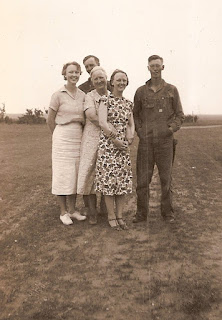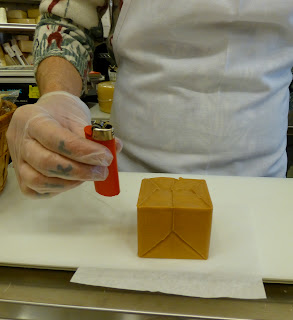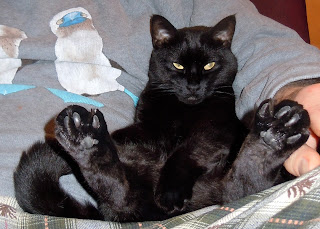The Norwegian Public Roads Administration is still struggling
weeks after the Great Cheese Tunnel Fire of 2013. A trucker escaped with his
life after abandoning his load of twenty-seven tons of flaming cheese in the
tunnel. No injuries were reported. The PRA administrator, Kjell Bjoern Vinje,
commented that in his fifteen years at the helm, this was the first time cheese
had caught fire on Norwegian roads. They’re still all bound up.
concealed inside the tunnel and, initially, demanded that inspectors be allowed
in to determine if Norway’s intentions were peaceful, but backed off when the Mr.
Vinje weighed in. Mr. Vinje, who had his hands full, communicated “bite me” in
such an adorable accent that the Security Council was mollified and withdrew
its request. In much the same way India became a nuclear state.
burned itself out, leaving only a molten lake on either end of the tunnel.
Traffic in the region is expected to be snarled for months, but the cleanup
operation itself is coming along nicely, after platoons of volunteers showed up
armed with flatbread and cardamom crackers.
 |
| Genuine Norwegians I am related to. |
Brunost is a goat cheese and is considered a delicacy in
Norway. The phrase “is considered a delicacy” is universally applied to things ordinary
people find revolting—things with lots of little legs, for instance, or things
made from testicles, or things cured for months in fermented camel spit. Brunost
is brown, it smells like a biohazard, and my mother loved it, but then again she
was Norwegian. She didn’t have to share it with anybody in the family. The Brunost
occupied a position of honor in the refrigerator with a moat of air all around
it to prevent cross-contamination. Mom cut herself a slice whenever she wanted
a little time by herself. I never tried it, but I remember hating it. At that
age I found mayonnaise a little spicy. The way I figured it, there was no
really good reason to make goat cheese if cows had not gone extinct, which they
hadn’t.
Mozzarella is made of water buffalo milk, and there’s certain commerce with
yaks, sheep, and even pigs, but the rest of the mammal order is largely
untapped. Probably the accessibility and size of the udder is the main
determining factor in using cow and goat milk, but theoretically any mammal can
be used to produce cheese. It is not true that every mammal produces milk. Almost
all the males are terrible at it, although some are fine with the milking
process.
But you can run upwards of twelve dugs on a dog, and that
should count for something. Dog cheese remains a rarity, however. Early
experiments with milking barn cats were risky and unproductive, but did lead directly
to the development of Laughing Cow cheese. Wolverine milk looked promising at
first, but there was no good way of removing the tranquilizer from it. Enterprising
Australians once proposed that marsupials’ pouches might be induced to stand in
for the udder, and milk be harvested with a baster and spatula, but they found
the kangaroo too combative, and the product from smaller marsupials was
unacceptably high in contaminants like wombat fuzz and tiny pink bandicoots.
Mostly, we’re stuck with cows and goats.
tunnel after the cracker crew has completed its task. He is hopeful that the
toll will be light, and anticipates the bulk of the damage will be at either
end, where the roof of the mouth of the tunnel was badly burned.


Any Norwegian Jarlsberger, per chance?
Oh. Now that is yummy. No.
Applause from this end of the tunnel. How you come up with the images and links amazes me.
Me too, Tabor. The mind boggles!
Well, you know, it's getting to where people send me stuff in case I haven't seen it.
When I made cheese to sell, I had a request for Gjetost…. I managed to make it well enough that the person who wanted it told me it tasted like it should (I had no idea what it was suppose to taste like)…. Although it didn't have any tiny legs or testicles included, it's not something I'd choose to eat 😉
But if it DID have tiny legs or testicles, you would have?
My wife is Swedish, but she has Norwegians in the family. I've had this cheese…. that's really all I can say… YUK!
Your wife is in a mixed family?
Tiny Pink Bandicoots would be a great name for a band.
I wonder if we could just name bands, and not actually form them.
Twenty-Seven Tons of Flaming Cheese would be a good name for a band, since the best name was already taken – GWAR (God What an Awful Racket).
It was?
Mozzerella is NOT made of … is it?? Please quote source 🙂
Love it, love it. Especially the ending. A universal experience, I think!
Yes, it IS made from Water Buffalo (or cow's)milk, see the Wikipedia entry http://en.wikipedia.org/wiki/Mozzarella
Well, knock me down and flog me with a cheese string … I will take me punishment like the cheese lover I am!
It's true that you learn something new every day if you're paying attention, especially if you're reading Murr's blog 🙂
Every thing I ever write is the God's truth. Of course, you know how stringent I am about that.
I need to add a water buffalo to the farm. All my mozzarella and cheddar cheeses are made from goat milk, and the family is rebelling.
Think I could sneak in a water buffalo with the new ducks and turkeys without Mr. Boom noticing?
Your family is rebelling, and your cheeses are revolting?
That's one pissed-off looking kitty cat!
Let's just go with "baleful."
I was weaned on gjetost. Now I need some, but don't get payed 'til tomorrow. Glad I have credit at the grocery store. Gjetost, jeg elsker deg! (goat cheese, I love you!) Is that kitty porn?
Really, Jono? Weaned?
Fondu to go! Right now, alpine farmers in Switzerland are probably filing planning applications…
Bring on the giant cubes of bread!
That was one cheesy post!
I think I'll not sign in with that remark.
Delicious post – as always.
And the cat is pure black velvet. Love the protectively placed paw that says, 'Hands off my milk ducts, lady!".
This is the softest cat in history. Word.
After a pretty crap day you have revived me, Murr. Being forced to laugh out loud is probably a cure for just about everything. Or should I say 'snort out loud'.
I think it is, too.
Still laughing! I love all forms of stinky cheese. I tried gjetost a long time ago and found it rather sweet-flavoured, but I'll have to give it another try. And like your mother, I find if I'm looking for some time alone, cutting the cheese always seems to work.
I can't believe I didn't think of that.
mmmmmmmmmmmm………. cheese!! I love ALL cheese!
So–have you tried it? Brunost, Gjetost, Primost…go ahead. Get back to us.
Well now, I was just recently reading on a blog (which one?!) about Boston's Great Molasses Flood of 1919. Which was both funnier and sadder, since people died in that disaster…
Well that was in my NOVEL…
I'm lactose intolerant, but I can eat cheese that has been aged over a year since by that time the cheese beasties have eaten all the lactose. The thought of a tunnel full of flaming cheese seems like a bad acid trip to me.
REally? Old cheese works for you? You know, this flaming cheese is made without curds, I think. It's all whey. Would that work?
Yeah, but gjetost taste so nasty that I don't want to eat it. These are the people who make rosettes and fatigmans and also eat lutefisk with curry sauce. Go for the Norwegian baked goods, and leave the comfort foods alone.
Mmm. Fatigman.
Can anyone tell me how one sets cheese on fire? I read about this but no explanations were given. One can cut the cheese (as noted above) and set that on fire.
Yuh, I've seen that, too.
Knew a guy who could flame in morse code. Marvelous sphincter control. And yes he was gay. Wonder if that's where the pejorative expression "flaming faggot" comes from? Or is it because known homosexuals were often burned as witches? Burning cheese is much funnier.
Sounds more like smoke signals to me.
You had me at "flaming cheese".
I've been told that camel's milk, a staple among Bedoins, is full-bodied and salty. Camel milk cheese is sold in some markets in the Middle East, and a Dubai coffee shop is promoting camel milk lattes.
http://www.cnn.com/2012/04/09/world/meast/camel-milk-dubai
There are a few other animals that people get cheese from. I didn't want to bring it up, but humans are among them.
I hope you're talking about toe cheese!
:: turns green ::
Murr, you are brilliant. Milking is hazardous with most animals. The Masai tribe milks their cows, and then for added zest, will drain some cow blood into the milk. Makes a special drink, I hear.
Its the healthiest milk every to buy from diary manufacturers in Dubai.